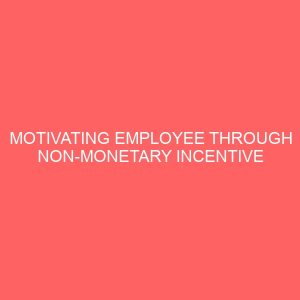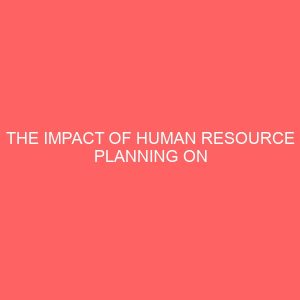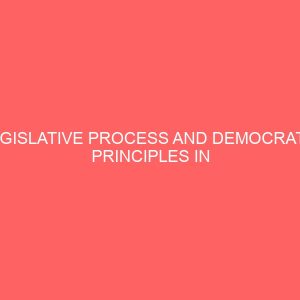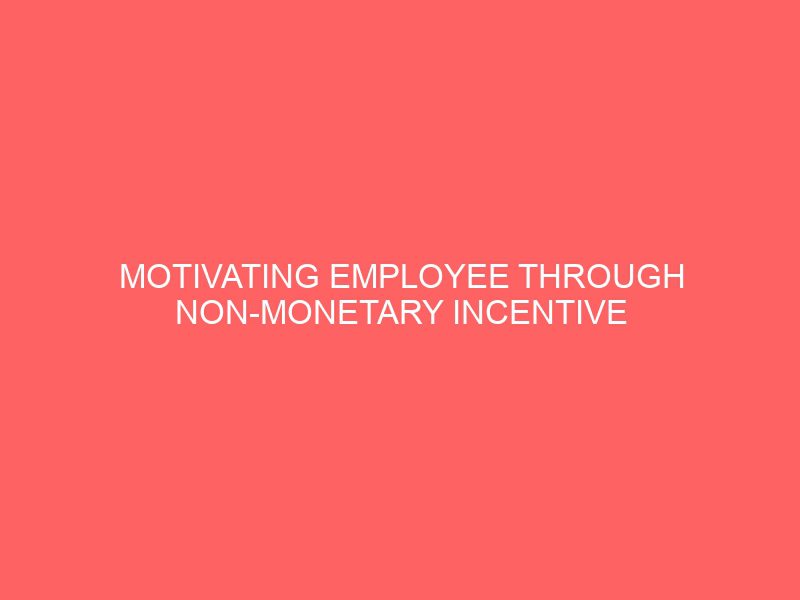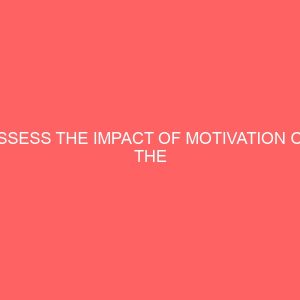Description
CHAPTER ONE
INTRODUCTION
1.1 BACKGROUND OF THE STUDY
As a matter of fact, all activities performed within an organization are goal directed and therefore the creation of an organization also has a purpose. The initiators/founders of the organization have their own objectives in mind and intend to use the organization as an instrument to achieve those objectives. So also, every individual have goals for joining an organization. To achieve these goals, will be quite difficult without knowing what motivate people to work. Any planning and organizing that will not or does not include adequate compensation for workers might lead to disinterest, frustration and boredom at work, this result to low productivity, high labour turnover, absenteeism, poor labour management relationship and counterproductive behavior can often have their roots dues to poor motivation of employee. The researcher is motivated to work on this topic because whenever a question is being asked on what motivated people or worker to put in their best to enhance effective output of an organization, the first thing that come into one’s mind will be through monetary measure. And since it has been the believe of maturity of people that it’s only through monetary terms that workers in an organization can be motivated, the researcher finds it interesting to find out other means through which workers can be motivated i.e. non-monetary means and which make workers to put in their best, willingness to work so as to enhance effective and efficient output of the organization in which they belong. Researching on how to motivate workers in an organization through non-monetary means is also interesting in the sense that the mentality of people will totally be changed from only the motivation through monetary means which usually leads to dubious act such as cheating, stealing, embezzlement, to maintain just a few that occurs in our organization today, with the intention of pleasing the worker so as to put in their best to the growth and achievement of the organization’s goals. The researcher believe that at the end of this work, a prefer solution will be found which will help the top management of an organization to motivate their worker through a non-monetary means of motivation, because the money set aside for the motivation of the workers could equally be invested into the organization for growth and diversification.
1.2 STATEMENT OF PROBLEM
There has been a controversy among management scientist as to whether motivation has any significant relationship with workers performance. Therefore, there is a need for a research into the problems of motivation in respect to employee performance and some of these problems are; i. The causes of employees low performance in an organization.
ii. What motivate one person may not be a motivator to another person.
iii. An effort to provide a motivate not related to need would have zero result. For instance where a person wants a promotion and he is not promoted, it shows that his need has been frustrated.
iv. An individual’s motives and needs are both complex and conflicting.
1.3 STATEMENT OF OBJECTIVES
The basic objective of this study is 1. To examine the obstacle to effective motivation of workers in the public service.
2. To examine the various ways in which labour force could be motivated and the extent of incentive schemes in any organization.
3. To find out the effect of the various forms of motivational techniques that are available and how they can be applied.
4. To come up with recommendation with a view to improve workers performance through motivations.
1.4 RESEARCH QUESTIONS
The following are the research questions which may serve as a guide to solve the research problems. The researcher’s concern is to find answers to the following questions;i. Are there ways which performance can be rewarded satisfactorily apart from monetary reward?
ii. How does money affect employees performance when use as the only source of motivation and where it is not flowing as expected?
iii. Which non-financial factors motivate employees to increase their performance?
iv. Why do some workers in an organization perform better than others?
v. Are non-monetary rewards cheaper when compared to monetary reward?
1.5 RESEARCH HYPOTHESIS
In finding solution to the problems at hand, hypothesis have been formulated based on the researchers observations,
where Ho stands for Null hypothesis,
H1 stands for true hypothesis or alternative.
Hypothesis i
Ho: Money alone does not motivate employee.
H1: Money alone does motivate employees.
Hypothesis ii
Ho: Job security and good working condition does not increase employee’s performance.
H1: Job security and good working condition increase employee performance.
Hypothesis iii
Ho: Lack of promotion is not an obstacle to staff motivation
Hi: Lack of promotion is an obstacle to motivation.
Hypothesis iv
Ho: Opportunity to fulfill higher level needs does not improve performance.
Hi: Opportunity to fulfill higher level needs improve performance.

